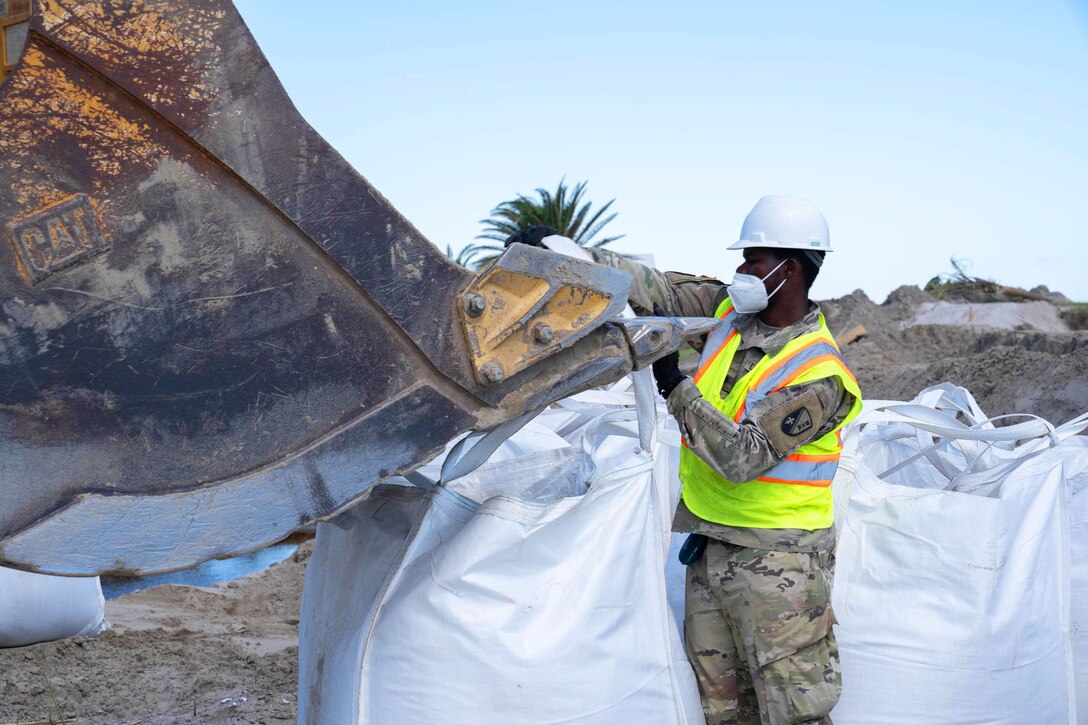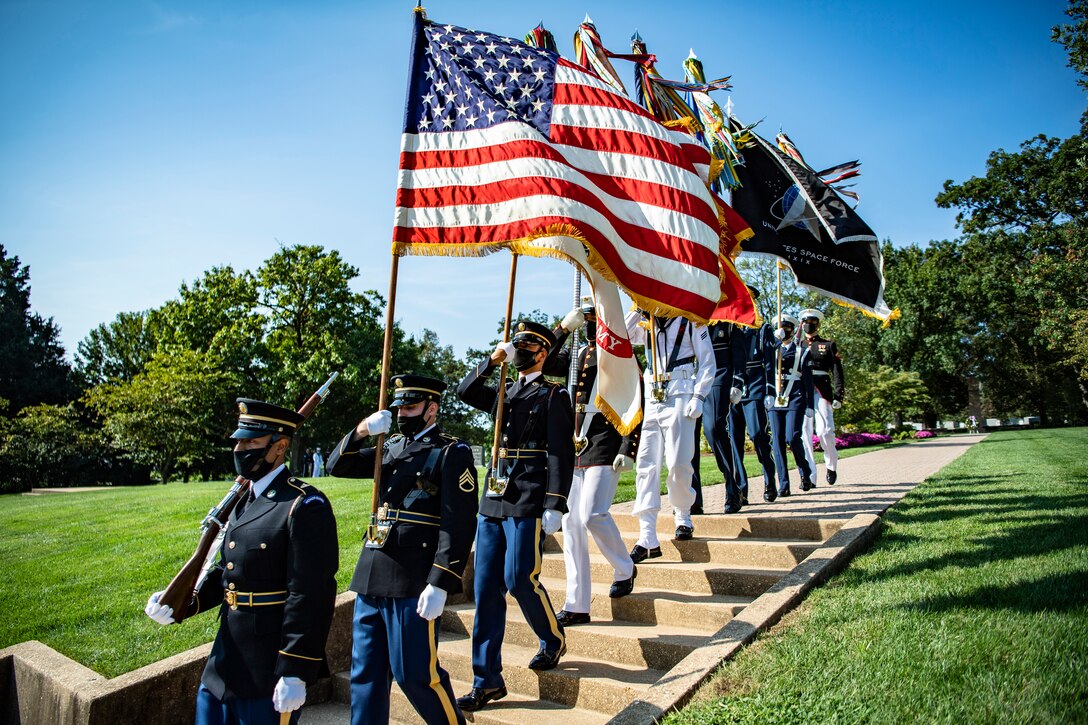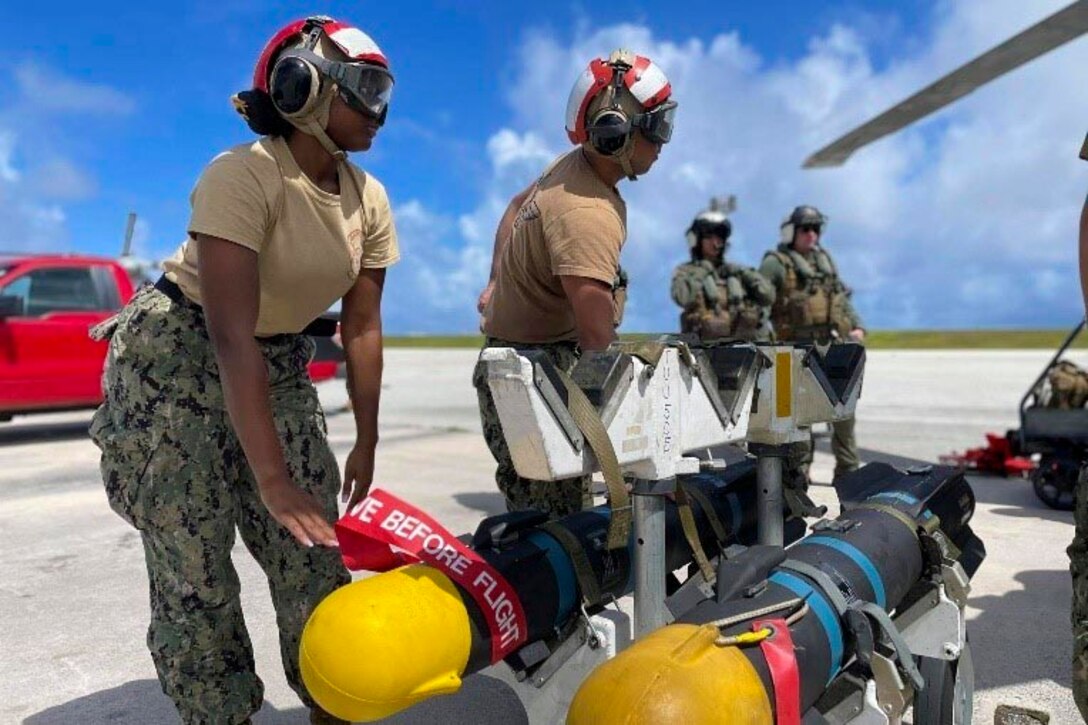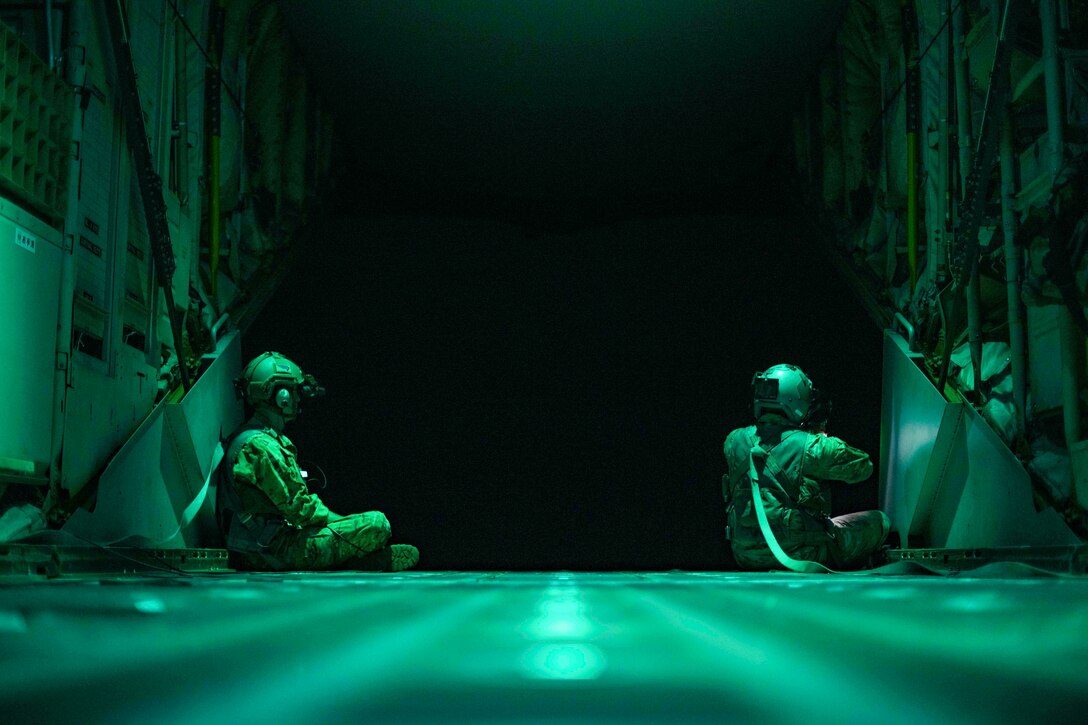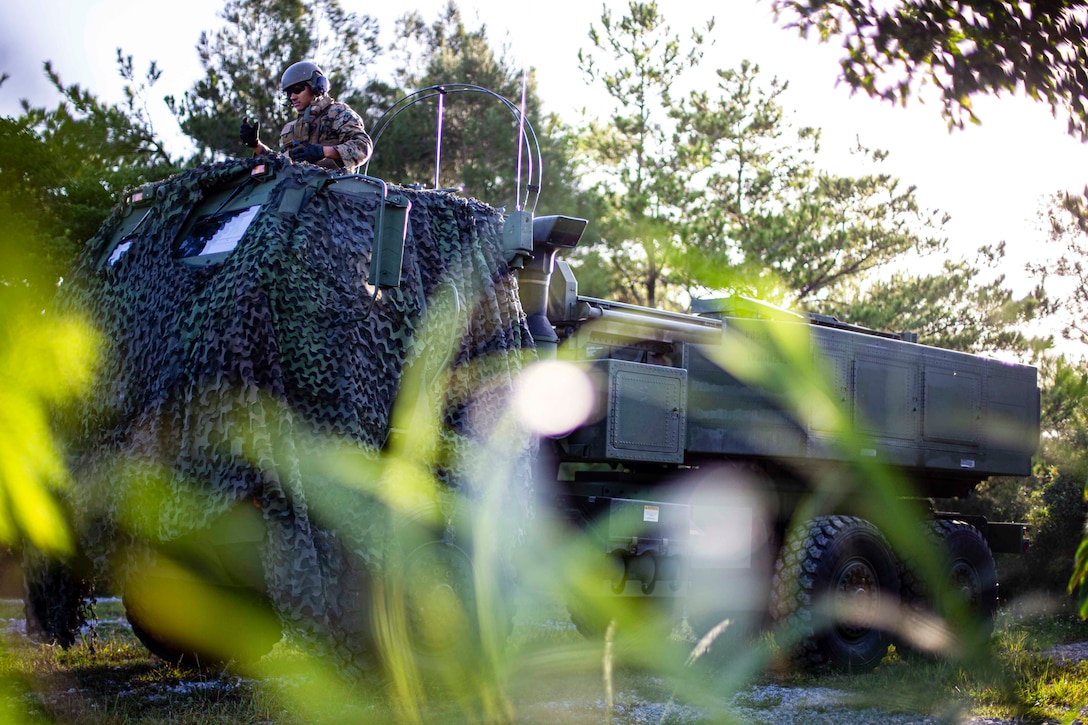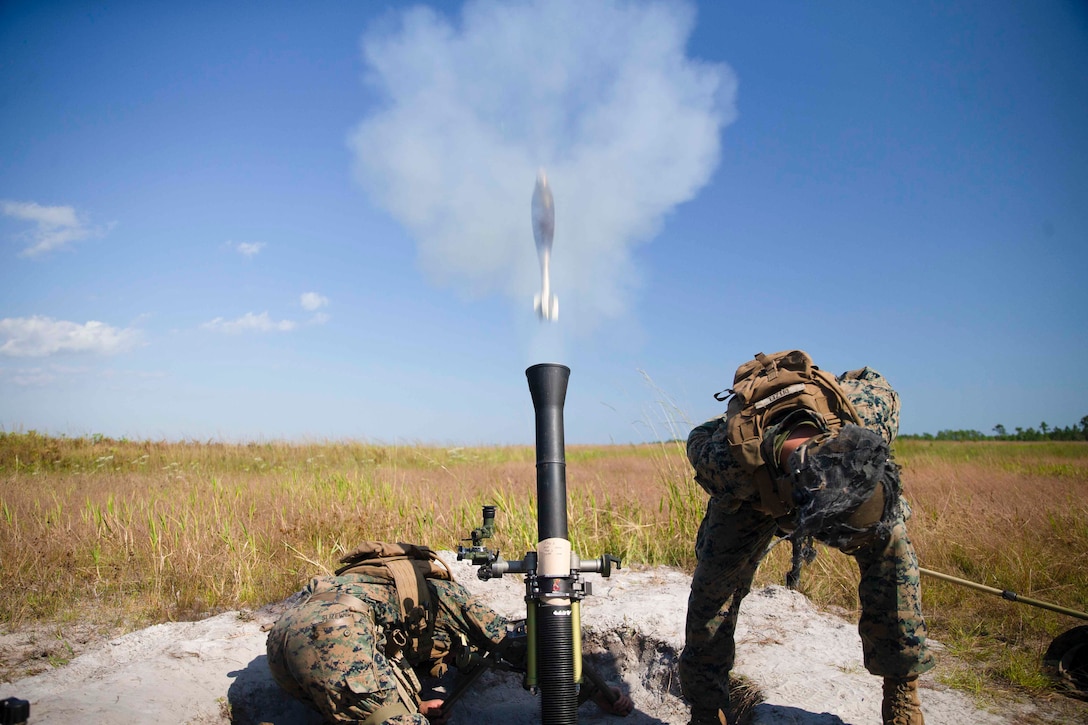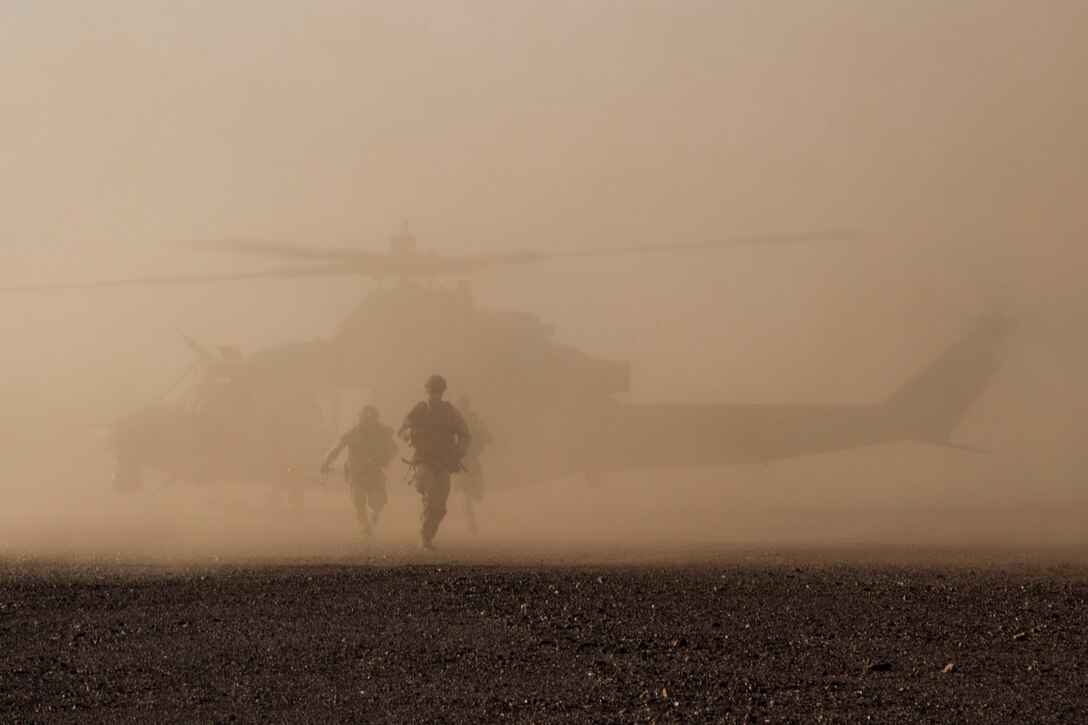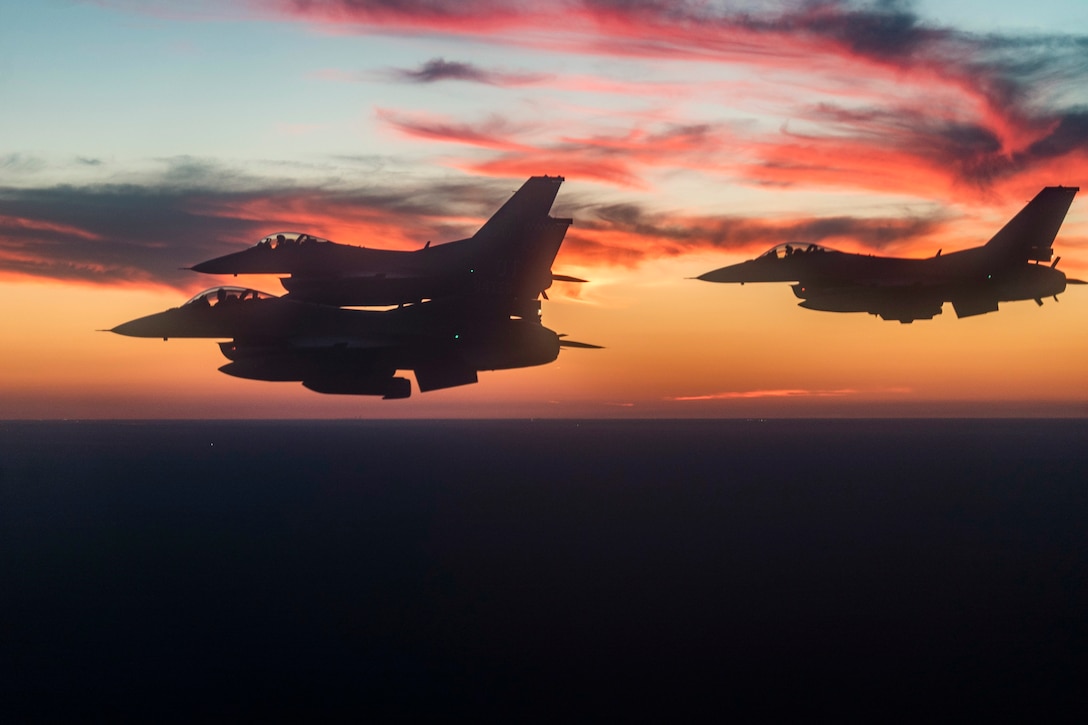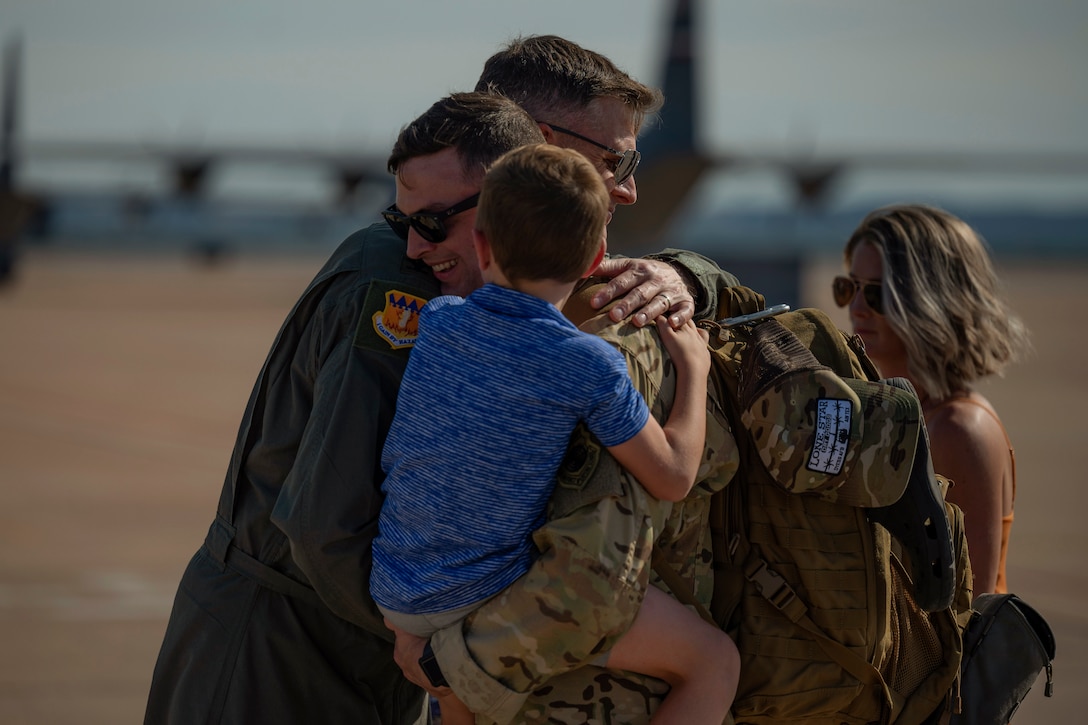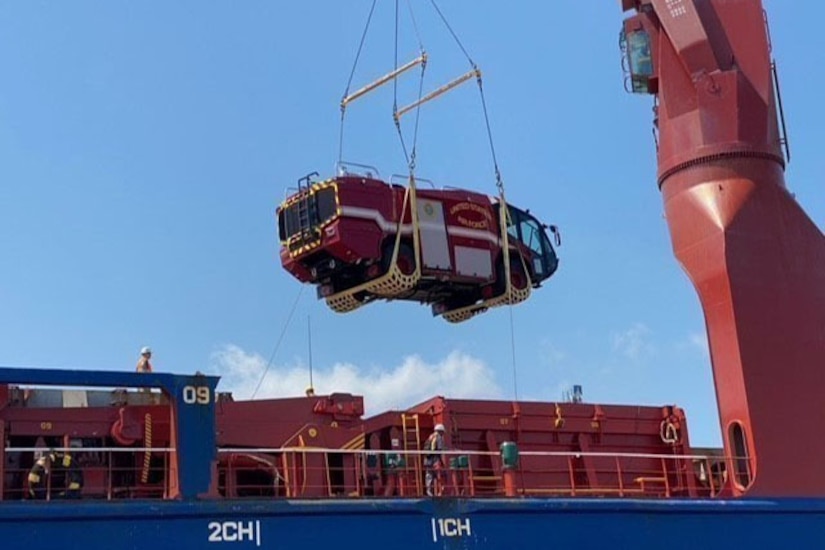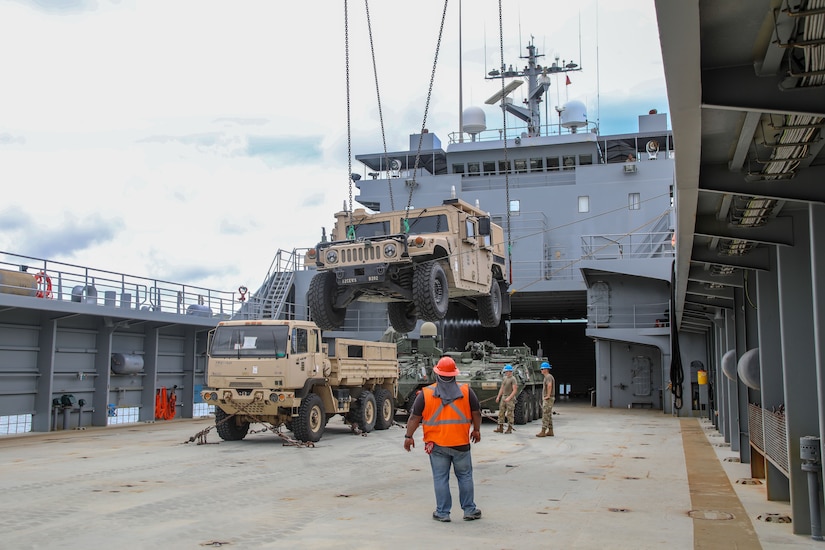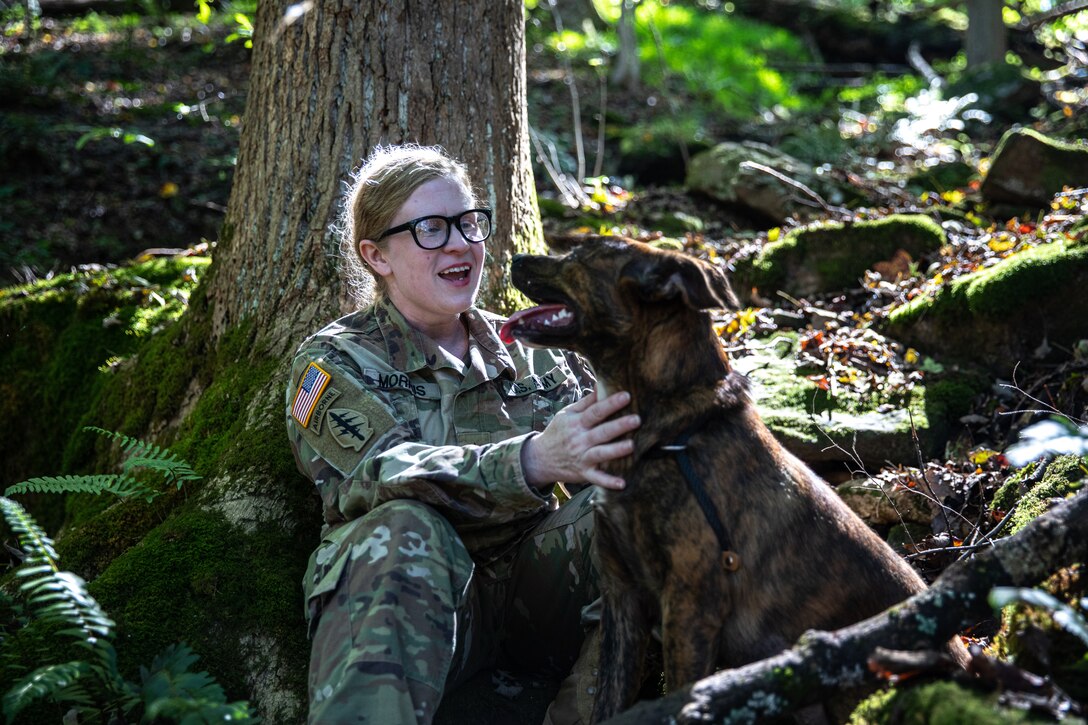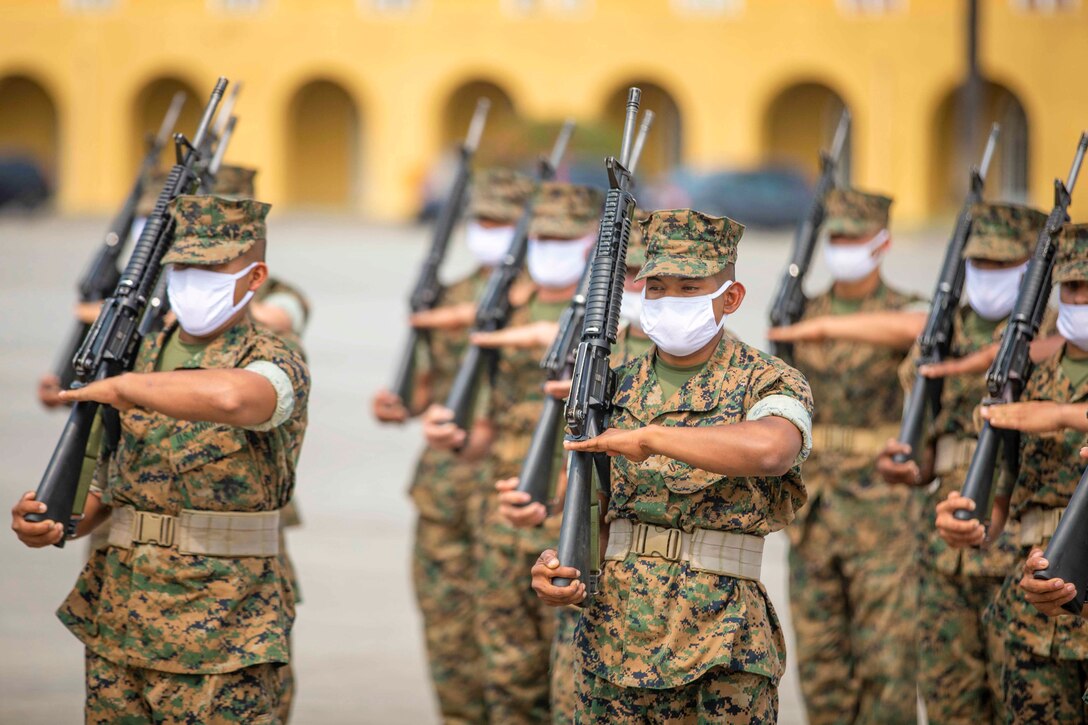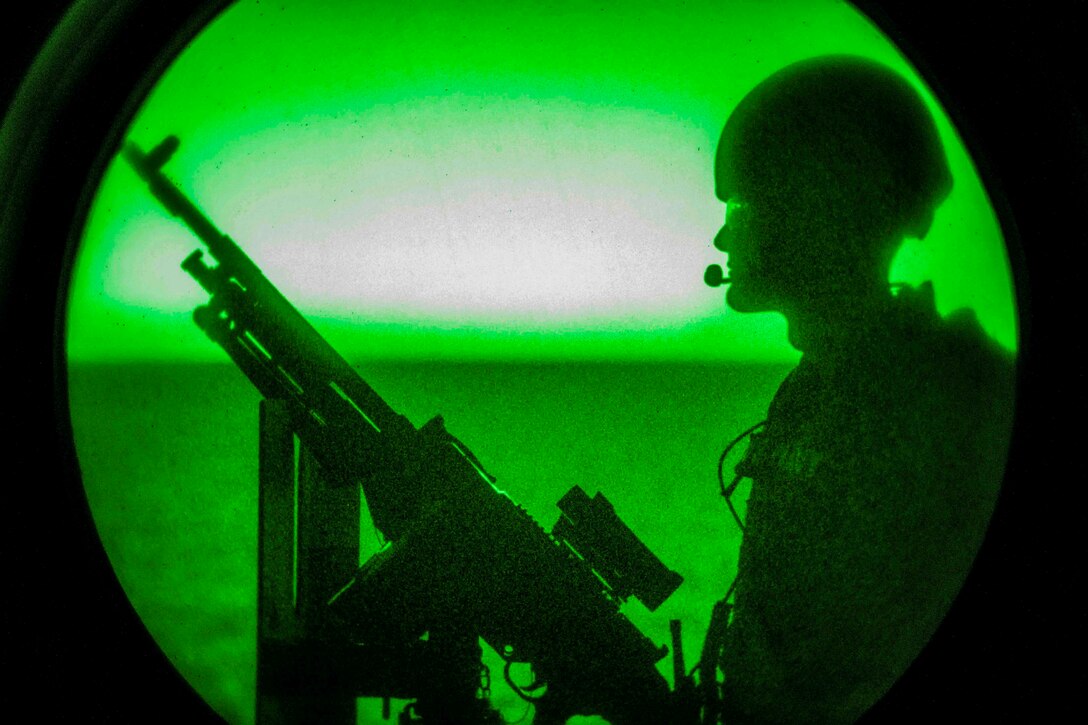Sept. 30, 2021
PRESS SECRETARY JOHN F. KIRBY: Good afternoon, everybody. I think you know -- I'm honored and privileged to be joined today by General VanHerck, the Commander of U.S. Northern Command and NORAD. The General's got an update for you on his work for Operation Allies Welcome and all the good work that we're doing across bases here in the United States.
The General will have some opening comments, I will turn it over to him in a second, and then we'll moderate questions and answers just like we -- we've done before -- I'll go ahead and choose you, please identify who you are and what outlet you're with before you ask the General a question, so he knows who he's talking to. And we've got about 30 minutes for that. Then when that's over, I'll stay behind and we'll do some other business of the day here from -- from the podium.
General, can you hear me and see me okay, sir?
GENERAL GLEN D. VANHERCK: I have you loud and clear and I see you just fine, John.
MR. KIRBY: Turn the floor over to you, sir. Thanks again for joining us.
GEN. VANHERCK: Okay. Thank you, John, and good afternoon to all of you. Let me begin by just saying thanks for spending some time with me today and allowing me to talk about the amazing efforts that are taking place at eight respective task forces across this country.
The men and women at U.S. Northern Command, along with our many partners, are proud to support Operation Allies Welcome and I'm pleased to provide you with an update on the efforts to date. As the lead combatant command for this operation, United States Northern Command provides oversight of DOD forces and activities in support of the Department of Homeland Security, the lead federal agency.
While DOD is not responsible for the immigration process, we are working hand-in-hand with DHS and the other agencies to enable the process. We've built housing capacity and we are providing our Afghan guests they environment they need while they work through the immigration process -- essentials such as a safe and secure environment, nutritious meals, warm clothing, primary medical care and other services.
Today, total capacity at the eight different installations is over 64,000 and our Afghan evacuee population is approximately 53,000. More than 10,000 DOD personnel are currently supporting Operation Allies Welcome.
Since we last spoke, my team and I have continued traveling to the DOD installations and task forces across this country. I've seen firsthand seven of the eight task forces and I plan to visit the eighth task force when I visit Camp Atterbury in the very near future.
Following each visit, I walk away impressed with how well the soldiers, sailors, airmen, Marines, Coast Guard members and the interagency team are working together to ensure our Afghan guests, as well as the personnel supporting the mission, feel safe, secure and respected.
Now, before I take your questions today, I want to briefly talk about three specific types of issues that have generated a fair amount of attention in the media recently. I want you to have the facts about the good and the dedicated efforts that respective task forces and their agency teammates to address those issues -- so I want to ensure you have that information straight from me.
The three specific issues are the living conditions at each task force, the medical care and vaccination efforts that are underway with our Afghan guests, and then finally, some of the law enforcement challenges we have seen and addressed at the task forces.
First, let me talk about living conditions at the task forces -- and I'd say they're similar to, and in many cases, exactly the same as conditions provided to U.S. service members during exercise and training missions. The task force is stood up to build eight small cities under emergency conditions. While it hasn't been perfect, I have seen firsthand how committed our teams are to improving every single day.
Our Afghan guests are living in a safe and secure environment with climate control billets, eating three healthy meals -- and culturally appropriate meals each day, including 24/7 grab-and-go options -- and enjoying recreational, classroom and other activities.
While areas for improvement are identified either by the Afghan guests or task force teams, we work with our interagency partners, volunteers and Afghan guests to address them quickly. My visit to Fort McCoy this past Sunday, which included interactions with the Afghan population, indicates they are grateful for the accommodations we're providing while they work through the immigration process.
Secondly, medical efforts truly have been a good news story and the health of our Afghan guests is a top priority. There are more than 1,700 medical professionals and staff attending to the needs of the Afghan personnel.
Afghan guests have access to necessary medical services, including essential family medicine, pediatric care, emergency medicine, basic laboratory, radiology, pharmacy services, primary dental care, psychosocial support and mental health services.
Additionally, the U.S. government continues to take every precaution to stop the spread of COVID and other diseases, consistent with CDC guidance. The task forces have undertaken vaccination campaigns and they are rapidly approaching 100 percent completion of all required vaccines for 100 percent of the eligible Afghans.
100 percent of the Afghans are COVID tested and 84 percent have received COVID vaccinations to date. COVID positivity rates are approximately .4 percent, well below rates across the United States. Our nation's citizens should feel confident in the work that DOD, along with our contract medical partners -- that we are doing and will continue to do to enable our Afghan guests to be ready to begin their lives in America.
Now, finally, there have been reports of various law enforcement challenges at a few of the task forces. We, along with our federal, state and local law enforcement partners, take each report seriously and the task forces work closely with the interagency team to address them expeditiously and appropriately.
The safety and security of all personnel at each task force and on each installation is paramount and we will continue taking all necessary measures to ensure the safety of not only our military and civilian members, as well as our Afghan guests.
While we have seen a small number of incidents reported, you may not realize the reports are often coming from Afghan guests who are seeking out our service members and our law enforcement professionals at the task forces.
While I am obviously not condoning anything that diminishes good order and discipline at the task forces, that Afghans are reporting incidents is a good indicator of their commitment to keeping the community safe, as well as their confidence in our people.
Our commitment to maintain safety and security for the entire population at each installation remains steadfast. Operation Allies Welcome truly is an unprecedented effort. The Afghan personnel I have met and spoken with throughout my visits are appreciative of our support and are eagle to begin -- are eager to begin their lives in America.
You know, I'm proud to be part of this whole of government effort and the entire United States Northern Command team is honored to support.
So I'm ready to take your questions, John.
MR. KIRBY: Thank you, General. We'll start with Lita Baldor of AP.
Q: Hey, General, thanks so much for doing this.
Can you give us a little bit more detail on some of the law enforcement issues? I mean, obviously a lot of us heard about the military service member who was apparently attacked. Do you have any more details on that, as to whether or not anyone has been either detained or otherwise caught in regard to that?
And then can you give us the numbers of violent or other incidents -- law enforcement incidents that you have seen? And are they concentrated at -- you know, in one base or are they spread out? Can you just give us a bit more detailed picture of that?
GEN. VANHERCK: Yeah, thanks, Lita.
So there -- there are two Afghan evacuees that are currently detained in federal custody. Those cases occurred, I believe, at Fort McCoy. Those folks have been charged and will be charged and -- and through the federal process, not by the Department of Defense.
What I would tell you is, for a population of approximately 53,000 personnel, I -- I've done some research and how that compares to populations across the United States, and what we're seeing is law enforcement violations that are on par and in most cases significantly lower than the rates that we're seeing in similar-sized populations across the United States.
For example, in six weeks in Operation Allies Welcome, in a population of 53,000, there have been eight reported cases of robbery and theft. An average six-week period in a similar place is in excess of 150.
I'm -- I'm extremely proud of our team. We have, on average, more than 600 security and law enforcement professionals at each task force each and every day. If you look across, that is about three to four times the average of most cities around the globe, if you will. And so, we're taking this very seriously. We take every accusation or incident to heart and take action right away, not only with our DOD members but primarily with our federal law enforcement, state and local law enforcement (Lita).
MR. KIRBY: Meghann?
Q: Have there been any more reports of security incidents involving service members? Attacks on service members or vice versa?
GEN. VANHERCK: No.
I'm aware of one incident that I believe you're referring to that occurred at Fort Bliss, I believe on the 17th of September. That is under FBI investigation. They're the lead agency. And that's the only one that I'm aware of.
Q: Thank you.
MR. KIRBY: (Off mic.)
Q: (inaudible).
Can you get us an update on the situation with the measles and the number of cases, vaccination rates, and how much longer you expect that to hold up the processing?
GEN. VANHERCK: So, I'm aware of 24 total cases of measles, 12 active cases. The vaccination rate is nearing or will be at 100 percent today for measles. The 21-day period varies depending on the individual and when they arrived, where they received their vaccinations. I expect, initially, completion of 21-day period to begin early next week.
MR. KIRBY: Lucas?
Q: (Off mic.) follow up, General. Lucas Tomlinson, Fox News.
What's the vaccination rate for the Afghans when it comes to the coronavirus?
GEN. VANHERCK: 84 percent, Lucas, today.
Q: And how long are the Afghans going to be on U.S. military bases?
GEN. VANHERCK: That's a great question, Lucas.
We're prepared to be here as long as we need to conduct this mission. That's best addressed by DHS, the lead federal agency. We stand ready to support. We'll be ready if we need to support through the winter months and into the spring.
Q: How about through the spring, General?
GEN. VANHERCK: Lucas, as I said, we're ready to support as long as required or until the secretary of defense directs me to stand down support.
MR. KIRBY: All right, we'll go back to the phones here. Jennifer Steinhauer, from the New York Times?
Q: Thank you.
If I could follow up on that question, sir, do you have a little bit of visibility into what the components are that are taking the longest to move the evacuees in -- out of these bases and into -- into their permanent situations? Is it mostly security checks? Are you -- are you flagging anything of concern in the security component, or is it mostly the vaccination/immigration process?
What is it that's -- it does seem to be taking quite a while.
GEN. VANHERCK: Well, thanks for the question.
It is not security checks, and it's not the vaccination or the medical portion. We have 24,000 today that have completed the complete medical portion of it.
I would defer to the relocation folks that have leads, some of our non-governmental agencies, on specific details. But the assurances piece, we're -- we're very -- not we, but the lead federal agencies and the non-governmental organizations are very conscious to ensure that each of the Afghan guests have a -- a great place to land and have assurances for where they're going to relocate to.
So, I understand that that right now is -- is the limiting factor on output.
MR. KIRBY: Courtney?
Q: Hey, General, it's Courtney Kube from NBC News.
I just want to make sure I understand one thing. So -- so flights are still not coming in, right, because of the measles? And do you have any sense of when they're going to restart?
And I have one other question.
GEN. VANHERCK: Hey, Courtney.
So, I -- I would anticipate that flights will start here in the very near future. I -- I don't have any confirmation on an exact date for you, but potentially in the next week we could see something because of the 21-day dates that overseas are complete with their vaccination process.
Q: And then, just to be clear, so there are currently 53,000 evacuees on military installations. Have you -- do you have any sense of, like, a -- a daily cost of how much this is costing to -- to house and -- and care for these people, or weekly or monthly? Is there any estimate for cost?
GEN. VANHERCK: Courtney, I don't. I -- I would defer to the OSD comptroller for a question like that. I'm -- I'm not sure what the cost is.
Q: (Off mic.) Will that be reimbursed by the federal government, or is that going to be a cost that will be -- continue to be -- be borne by DOD? Do you know?
GEN. VANHERCK: I -- I don't know if you're asking me, Courtney. That's -- that's the financial aspect is not in a combatant commander's lane.
MR. KIRBY: (Off mic.) question for the record and get back to you.
Q: Thank you.
MR. KIRBY: (Pierre ?)?
Q: Pierre (Off mic.) from (inaudible), General.
If you don't mind, just to confirm that the refugees are offered halal meat and are offered also a place to -- to -- for prayers?
GEN. VANHERCK: That is correct. Halal meals are provided three times per day, plus the 24-hour option for grab-and-go. And we have set up places for worship and prayer for each of the task forces.
Q: Thank you.
MR. KIRBY: Janne?
Q: Thank you, General.
On the U.S. missile defense against North Korea, you said last time that you are ready, 24/7/365, if North Korea decides to launch ballistic missiles. How is the United States missile defense capability against North Korea's hypersonic missile launch this week?
GEN. VANHERCK: I'm aware of the -- the -- the reference you're making. I understand the intelligence community is still making an assessment of the -- the North Korean claim to have tested a hypersonic. We'll just have to see that capability.
Right now, it would be my assessment that the homeland would be safe and secure from a hypersonic capability as North Korea claims they have tested.
MR. KIRBY: (Off mic.)
Q: Thank you, General. Travis Tritten with Military.com.
(inaudible) sense of the processing rate, you know, how many of these Afghan refugees are moving off installations into society per day? Or give us some sense of that?
GEN. VANHERCK: You know, that's best answered by Homeland Security.
What I can tell you is there's approximately 4,000 that are complete with the process of pending resettlement at this time with assurances for relocation.
MR. KIRBY: Back to the phones. Tony, do you have a question for the general?
Q: General -- yes, I -- Tony Capaccio with Bloomberg. I did have one question. Were the biometric screenings that were done in Afghanistan, have those aided in getting the people who are coming here a proper identification?
GEN. VANHERCK: Tony, I -- that's -- again, that's best for Homeland Security. I -- I understand that biometric screening, biographical screening continues even after they arrive at the task force locations but to specifically answer your question, I can't do that, you need to refer that to DHS.
Q: OK. Fair enough. Thanks.
MR. KIRBY: Yes, Carla.
Q: You -- so when you said there were 4,000 complete with a process pending for resettlement. That 53,000 number, is that the total number of Afghan evacuees? That doesn't include any that have been resettled so far? None have been resettled? Is that I'm -- am I interpreting you right?
GEN. VANHERCK: That's not correct. I'm -- I apologize if I mislead you. So so far resettled is over 2,600 or so of which more than half of those have been resettled through the SIV process or the refugee process at this time.
Q: OK, thank you. And you said your total capacity now was 64,000. When you talk to your EUCOM and your CENTCOM counterparts, how many total more Afghans are you expecting?
GEN. VANHERCK: What we're seeing in the EUCOM and CENTCOM AORs right now is slightly over 14,000 that are still remaining to come forward to the eight task forces. So when you do that math you see that we're relying on the output to insure that we have enough capacity for the additional remaining Afghans coming this way.
MR. KIRBY: Back to the phones. Tara, did you have a question?
Q: Yes, General, on the security clearance process, how many of the Afghans have completed or completely cleared to resettle? And as you said, it's -- it's a question of having a spot available for them to resettle to.
GEN. VANHERCK: I don't have the specific number but it's -- I believe it's slightly over 4,000 at this time have completed medical -- all their -- their screening processes and are pending assurances for relocation.
Q: And when our -- out of all of the Afghans that are still going -- undergoing the security clearance process or the vetting process, how many total have been pulled for additional screening because something popped, you know, popped red?
GEN. VANHERCK: Yes, I don't have that number. I would defer that to DHS again. And I'm not aware of any significant problems that we've had once they have arrived at any of our task forces.
Q: OK. And then just a follow on, my colleagues Lucas' question, you know when -- when the bases were first preparing to receive Afghan evacuees, there was a general thought that this would be a very short process. You know maybe 10 days, maybe two weeks before they went through and obviously the members are far greater and it's taking a much longer time.
What kind of planning discussions have there been if this needs to be a long term solution. If there isn't somewhere for some of these evacuees to go and they are reliant on DOD to provide a long term housing solution for them?
GEN. VANHERCK: Yes, so two points to that. First, like I said, we were -- remain ready to do this until the mission is complete. The -- the numbers I think you're referring to were likely numbers that came out of our initial housing of Afghan SIV applicants as they came into Fort Lee where we were averaging about five to seven days of processing time because they were further along in the process.
I'll have to differ to the State Department on the total numbers but, you know, that -- that -- the numbers of SIVs and where they are in the process makes it a shorter process for them. If you're just at the beginning of the SIV process or not in the process and you're a P1 or P2 in -- on the refugee process, now that's a separate way to go forward for how they're going to move onward to be a settlement into the United States. Does that make sense to you?
Q: Yes, thank you.
MR. KIRBY: Alex.
Q: General this is Alex Marquardt from CNN. I was speaking with a senior Afghan general who's here in the states and -- and he was feeling like he deserved some preferential treatment, if you will. I was wondering if the conditions, the lodgings, the -- the feeding, the food for all Afghans are -- is it completely egalitarian, are they -- are they all -- are all conditions the same? Are any priorities given to anybody?
GEN. VANHERCK: They're all the same. I'm not aware of any priority being given over any Afghan based on prior position, job or anything.
Q: Can I just follow-up on Lucas' question as well. You said that 84% are vaccinated for COVID. Is there any notion of vaccination hesitancy among these Afghan arrivals or is that not even a factor because they have to be vaccinated?
GEN. VANHERCK: I'm not aware of any hesitancy. Their -- the vaccination protocols are part of the process for clearance and onward movement.
MR. KIRBY: There's time for just a couple more. (Inaudible).
Q: (Inaudible) Afghan journalist. General, I have applied to (ask ?) and this camp, is (there ?) any Afghan government officials among those refugees that you arrived at the United States?
GEN. VANHERCK: I'm not aware specifically but I would defer you to either DHS or State Department for any specifics on any prior Afghan officials.
MR. KIRBY: All right, Lucas, you get the last one at the General, go ahead.
Q: Just to follow-up with my colleague Alex's question. Is the coronavirus vaccine mandatory for the Afghan refugees, General?
GEN. VANHERCK: I'd have to go check but I believe it is, Lucas, as part of the protocols for onward movement.
Q: Why is it 84 percent of Afghan refugees have the coronavirus vaccine but 100 percent have the measles?
GEN. VANHERCK: That's correct today. You know we're continuing to work through the vaccine regimen. The measles took priority because of the -- you know the transmisity rate of the -- the disease if you will. So we made sure we got 100 percent through as quickly as possible.
Q: (Inaudible).
MR. KIRBY: Go ahead and ask. Go ahead, Courtney.
Q: (Inaudible).
MR. KIRBY: General, do you have us?
GEN. VANHERCK: Yes, I do. I -- I responded back for something I wanted to remind Lucas is that the COVID positivity rate is 0.4 percent, less than 1 percent. And so we haven't had significant challenges. I will tell you that the task forces concern is primarily flu outbreak at this point and we're working hard to get the flu vaccine as well, across all of the Afghans.
MR. KIRBY: Courtney, did you have a question?
Q: Yes, I've got a question. It's Courtney Kube. Just some quick clarification. Is the 84 percent two shots of the COVID vaccine or one?
GEN. VANHERCK: Courtney, I'll have to go confirm that but I believe we're giving Johnson & Johnson, and those are single shot vaccines.
Q: Thanks.
MR. KIRBY: OK, General, thanks so much for your time. I'm going to turn it back over to you if you have any closing thoughts.
GEN. VANHERCK: Yeah, thanks, John, and thanks to all of you for being here and taking some time to let me tell a little bit of the story that's ongoing. I'm incredibly proud of the entire DOD team and the interagency team for the work that they're doing.
We continue to strive to improve to be the best that we can going forward and we look forward to continuing to be part of the solution for the 60-some-odd thousand that'll eventually be here, to move them on. I -- I -- continue to be focused on being as transparent as possible with you. That -- that can be indicated by the media at Fort McCoy today. We're happy to do that and we look forward to continuing to be transparent with you.
And thanks for the opportunity, John.
MR. KIRBY: Thank you, General, appreciate your time today.
OK, I'll go ahead and get on to some other things as well. I think you saw that today, the Department of Defense released the calendar year 2020 Annual Suicide Report. We continue to take action to prevent suicides while supporting our military members and their families.
As the Secretary has said, every death by suicide is a tragedy. The current year 2020 Suicide Report presents recent suicide data for service members and their families and describes current and future efforts underway to combat suicide.
That's -- this is a paramount challenge for the department. We must redouble our efforts to provide all of our people with the care and the resources they need to reduce stigmas and barriers to -- to that care and to ensure that our community uses simple safety measures and precautions to reduce the risk of future tragedies, and we'll continue to work swiftly and urgently, in close collaboration with our part -- our partners at the Department of Veteran Affairs.
Also this morning, Joining Forces and the National Security Council staff released a White House Report on Strengthening America's Military Families. That was signed by the President and the -- the secretaries of 15 executive departments, including the Secretary of Defense.
The -- the report outlines the first round of administration-wide commitments and proposals to support military and veteran families, caregivers and survivors, and that full report can be found at www. -- .whitehouse.gov/joiningforces, and I encourage you to go took -- take a look at that.
And with that, we'll take questions. Lita, did you have one for me?
Q: Sorry. I'll let someone else go since I already had a shot.
MR. KIRBY: OK. You all right?
Q: I was trying to see (inaudible) Lita (inaudible).
MR. KIRBY: Oh, OK. (Laura ?)?
Q: Lara, General Milley, during his testimony earlier this week, said that the U.S. lost the War in Afghanistan and called it "a strategic failure." So can you tell me does the department agree with that assessment?
MR. KIRBY: Well, I mean, I think I would point you to what the -- the Secretary said in his opening statement and throughout two days of congressional testimony, that -- that we -- he -- we -- we shouldn't lose sight of the fact that we prevented another attack like 9/11 on American soil and that we significantly degraded Al-Qaeda's capability and that -- and that other progress was made in -- inside Afghanistan, but he also said, and I thought was very frank, about some of the tough questions that he thinks that we need to consider and ask ourselves going forward, now that we've -- now that these 20 years of war is over, and it's going to take some time to go through that.
But, you know, take a look at the strategy -- or strategies that we had, take a look at -- being humbled to take a look at our ability to stand up state institutions in a -- in a -- a country like Afghanistan and whether -- whether that was done the best way it could be or appropriately.
So I think the Secretary was very frank about all of the things that we need to consider as we look back at 20 years of war and not just look back at the last two months.
Q: And then on -- just a follow up on a different question -- is the DOD IG considering a probe into the SIV program and the department's role in that?
MR. KIRBY: I am not aware and I'd point you to the -- the DOD IG. It's an independent entity so I -- I wouldn't be able to speak for them anyway.
(Najira ?)?
Q: Thank you, John. There is many reports of Taliban killing Afghan commandos (inaudible) the U.S. operation that worked very hard for them but it shows that Taliban tortured them and killed them. Do you have any plan -- do you -- do you -- do you have any plan to bring them in the United States, which is (inaudible) do you think ...
MR. KIRBY: Well, again, I'd -- I'd point you to what the Secretary testified to over the last two days, that just because the military footprint in Afghanistan is gone doesn't mean that the -- that the -- the efforts to bring our Afghan allies and whatever Americans still want to come out, come out, that -- that still continues.
So we're going to continue to work at that, in concert with the State Department and with non-profit and -- and other, you know, civilian-led opportunities as well.
(Janne ?)?
Q: Thanks, John. (Inaudible) on the (inaudible) -- the U.S. and South Korea Integrated Defense Dialogue was held in Seoul this week, 27th and 28th. What was these discussed? and (inaudible) of this meeting?
MR. KIRBY: So what I -- I can tell you is that we did have a good session, good set of meetings. As you know, this is a regularly occurring set of talks, and I think without getting into the -- too much detail, I mean, the -- the whole panoply of issues regarding our alliance and -- and trying to make sure that that alliance stays strong were -- were all discussed.
Q: And also, you know, continued -- North Korea continues in missile launches. What is the United States' analysis of North Korea's hypersonic missile launch? Do you have anything (inaudible), particularly for this missile launch for this week, not (inaudible)?
MR. KIRBY: For this -- the -- you're talking about the -- the -- yeah.
Q: Yeah, two days ago.
MR. KIRBY: Yeah. So again, I'd point you back to what the General said -- we're aware of the missile launch and we're consulting closely with our allies and -- and partners. While we've assessed that this event does not pose an immediate threat to U.S. personnel or territory or to our allies, it does highlight the destabilizing impact of the DPRK's illicit weapons program and -- and nothing changes about our commitment to our alliance with -- with both Japan and South Korea.
Q: ... (inaudible) this (recognizes ?) the -- this missile is the hypersonic missiles, no?
MR. KIRBY: We're still assessing the specific nature of this launch event and I won't go beyond that.
Q: Thank you.
MR. KIRBY: OK. Yeah?
Q: Thank you. You said either last week or two weeks ago that Secretary Austin was open to relocating the families affected by the August 29th strike. Is there any update on that or on the payments for the families?
MR. KIRBY: I don't, and I think you heard General McKenzie and the Secretary speak to this yesterday. The Secretary made -- made it clear in testimony that he does support the relocation of the family back to the United States, if that's something that they want to do. I don't have any update for progress on that.
And I think you heard General McKenzie say yesterday that -- that -- that we're still working through the -- the -- the payments and what that would look like, how that would be affected. And we hear OSD and our policy shop are assisting in that effort as well. But I didn't have any specific updates for you.
Alex?
Q: On the payments, John, when it was first mentioned -- it's been a couple of weeks since it was first mentioned. What are the challenges? If you could just get into why is it complicated to figure out how payment is made, how much is made? That seems like a much easier thing to do than to relocate a family from Afghanistan.
MR. KIRBY: Well, I don't know whether it's easy or not, Alex. I think you've got to -- not only do you, you know, have to work out the communications with the recipients and making sure that you're talking to the right people, and that they, whoever it is you're talking to, are empowered by the family to make decisions on their behalf. And then, you know, you -- you make an assessment about what the proper amount is, and then how that amount would be transmitted to the family. And those discussions are ongoing. It's not that it's it -- it's not that because we haven't done it yet, that it's some sort of hyper complicated process, it's just that we're working our way through that. And we want to do it the right way. We want to make sure that -- that it's done with sincerity and solemnity and in the -- in the appropriate manner. And so, we're still working that through.
Q: It's obviously an extremely sensitive process. In the past -- when it's been done in the past, how does it typically work? Because I imagine it would be difficult for the U.S. military to say, this is an amount that we think would be appropriate, or is it the U.S. side that would make the first step, is it the family side that would make the first suggestion?
MR. KIRBY: Yeah, I'm not an expert on the payment process. So, I better take the question rather than try to speculate here. And I'll see if I can get you a process-oriented answer. My -- my guess would be that it's different for each situation and with each family. But let me take the question without speculating and -- and we'll see if we can get you a better process-oriented answer.
Carla?
Q: Thank you. Was the testimony yesterday, General -- Secretary Austin was talking about, explaining how a NEO, an evacuation couldn't start until the State Department, assuming the ambassador started it, and then Milley was asked about the question again, and he asked should the NEO have started earlier, and he said that's a valid question that we need to look into, was this building -- was the Pentagon pressuring the State Department, Secretary Blinken, or the ambassador to start a NEO earlier? And if so, at what date was that?
MR. KIRBY: So, a noncombatant evacuation does have to be called by the State Department; that's doctrine. That's the way, that's the policy. That's the way it works. And as you heard the Secretary said yesterday, we were in constant communication with our State Department colleagues throughout August about that, and other issues, of course, particularly in terms of, you know, moving people out of the embassy.
So, there was a lot of communication with the State Department; this was one of many topics that were frequently and routinely discussed with -- with the State Department. And I think you also heard the Secretary say yesterday that -- that while we certainly had a view, we respected the fact that they too had a view. Remember that right up until, you know, it was clear that we were going to have to leave because of the fall of the Ghani government; the State Department had been given a mission by the President of the United States to maintain a diplomatic presence in Afghanistan. In fact, our role in that was to get down to a level of force commensurate with what would be required to protect and defend the work of our diplomats.
But their mission in Afghanistan, while ours was ending from a combat-train and advise-assist this perspective, the plan had been that their mission would continue. And that means maintaining an embassy, populating that embassy, continuing the programs and initiatives that we had -- that we had done. Because again, we all, until the very end, as the Secretary said, we were working with a democratically-elected partner in the Ghani government. And so, the State Department had different equities. That's -- that's the way it's supposed to be. So, there was constant communication between the -- the -- the two departments about -- about what an evacuation operation might look like and when would be the right time to do that.
Yeah.
Q: Thank you. I wanted to ask you about last week's squad summit coming together to (pull ?) countries together. How does it help you in addressing the challenge posed by China in the Indo-Pacific region?
MR. KIRBY: There are lots of outcomes to the Quad relationship. And they don't all have to do with China. So, I think that's an important thing to -- to state upfront. You know, it's not that the Quad exists simply to counter China or their influence. Now, obviously, what China's doing in the Indo-Pacific region, the aggressiveness, the coercive nature with which they try to press their claims, certainly is a frequent topic of discussion with all our allies and partners, and certainly inside the Quad. What the Quad arrangement gives us is a terrific -- another terrific opportunity to work multilaterally on all kinds of initiatives that can help create what we really want here, which is a -- a free and open Indo Pacific region. And there's a lot that goes into that, and not all of it has to do with China.
Travis?
Q: (OFF-MIKE) question on the hearing on the hill this week. When they were questions about Pakistan, and its link with Taliban and ISI, both the Secretary of Defense and his two Generals, said they wanted to discuss not in the floor setting. Why -- what is such an unknown thing that you don't want to discuss about the relationship Pakistan has with the Taliban and ISI?
MR. KIRBY: I think they were referring to specific issues regarding the threat of terrorism, and particularly along that border, that they felt would be better done in a classified setting. And I don't -- I'm not going to talk about those kinds of issues here from the podium. I would just say what we've said before, I mean, that -- that, as a neighboring nation, and an important neighboring nation, Pakistan, you know, certainly has equities and responsibilities with respect to terrorism in that part of the world. And we've been very honest about our concerns with Pakistan for a long time, about the safe havens that exist on their side of the border along that spine. And those concerns are still valid today.
And we continue to have candid conversations with Pakistani leaders about our concerns in that regard. And I would remind, and I think it's important to continue to remind that -- that the Pakistani people, likewise, have been rendered victim by terrorist threats that emanate from those groups and along that same border. But the specifics, I think I would -- I'm certainly not going to say from the podium here, what the Secretary and -- and -- and the chairman might want to have conveyed in a classified setting.
Travis?
Q: Thanks, John. Back in June, the Deputy Secretary had ordered the UAP task force be formalized and that their -- the department create a process for collecting and compiling all that information. Do you have any updates on that process?
MR. KIRBY: I do not. But let me take the question, and we'll see if we get you an update. I don't have anything updated.
Q: (OFF-MIKE) follow up. Once that process is complete, do you anticipate that some of that information in some form is going to be released to the public, or do you believe that it's going to be mostly classified information?
MR. KIRBY: About the process itself?
Q: No. About the reports themselves, once there's a system to collect --
MR. KIRBY: We will be as transparent as we can be Travis, but obviously the -- we also have an obligation to protect sensitive information, classified information. And so, like any other program that we're evaluating here at the Pentagon or initiating, we'll have to balance the very real rights and responsibilities to be transparent with our rights and responsibilities to protect national security information. So it will be a -- it will a balance. I'm not going to commit right now to releases of any specific nature.
Q: Two more questions, John. One question, the Taliban warned United States that not use Afghanistan with the (drone ?) two days ago, their warning (U.S. ?).
MR. KIRBY: We've already addressed this. I don't have anything additional to add. We believe we have the authorities that we need to continue to protect the nation.
Q: And the second question, do you support the Afghan government then excile by Ghani?
MR. KIRBY: That's a question for the State Department, (Azera ?), not for the Defense Department.
Yes, in the back there.
Q: (Inaudible) question, you mentioned that you have degraded Al-Qaeda and that also you prevented another 9/11 and also some other achievements in Afghanistan. Can you talk about those other achievements as we have seen pretty much everything has been reversed by Taliban.
MR. KIRBY: Well, I think you heard the secretary talk about this in his opening statement. There's been a -- progress in Afghanistan that he believes the international community should work hard to preserver.
And a lot of that had to do with rights for women and girls. And we're already seeing them erode some of those. Education, commerce and business, great progress in Afghanistan economically. Flying over Kabul in March, it was stunning how -- what a bustling city that it had become.
Afghanistan is not the same Afghanistan that the Taliban took in 1995. It certainly wasn't the same -- isn't the same Afghanistan that it was in 2001. It's a very young now population, very tech savvy, very connected to the outside world.
And if the Taliban, if they're sincere about what they claim they desire which is some sort of sense of international legitimacy and international support, which they're going to need certainly from an economic perspective, then they would do well to maintain some of that progress and to abide by some of their own promises about maintaining some of that progress.
Q: And also is Johnson & Johnson vaccine being administered to the U.S. DOD personnel in the military?
MR. KIRBY: Some. Yes. I mean, we have used the Johnson, particularly overseas and for troops deployed. Again, one of the advantages of it is that you only need one shot, so for some deployed units it made the most sense so that they could get one vaccine and be done.
Yes.
Q: On the suicide report, John, the rate from 2015 to 2020 was over 40 percent which is -- which is pretty staggering. And yet it wasn't clear from the report and I did -- I tried to ask during the briefing earlier but I wasn't able to.
To what did the Defense Department attribute that 40 percent jump? We did hear from the Secretary of the Army saying that there is no clear reason, but for a figure that big you think that there would be some real factors there.
And they did say earlier today that COVID was not one of them in the past year, at least.
MR. KIRBY: Yes, I can't -- I don't know that I'm able to give you a better answer, Alex. It's a fair question. And I think one of the things that is bedeviling about suicide is that there's -- it's often very hard to connect dots and causality, what leads somebody to make that decision, and it's -- it's not -- and -- and often, you never really know.
So it's difficult to denote specific causality with suicide on an individual basis, let alone an institutional basis, and I think that's why it's so difficult for us to -- to speak with it -- with any -- speak to it with any specificity, except to say that obviously we take this very, very seriously. Nobody wants to see the numbers that we reported out today and we continue to look for ways to get smarter about prevention.
And I know that they detailed for you some of the things and the initiatives that the department is doing and we're going to continue to refine them, review them, change them, adapt them as we need to going forward.
Laura ?
Q: Yeah, so earlier today, the Taliban accused the U.S. of violating the withdrawal agreement by continuing to fly drones over Afghanistan and warned us against doing that in the future, warned of consequences. So what is your response to that? And how -- how do we continue counterterrorism operations without flying drones over Afghanistan?
MR. KIRBY: So two very distinct questions. One, I've not seen this comment. All I would say is that, as I said the other day, we have the authorities that we need to continue to defend our interests and -- and the security of the American people there and around the world, and we're going to do that.
The second thing that I'd point you to, Laura , is -- is that over-the-horizon operations don't always have to include unmanned aerial assets, and they don't. That -- that we use unmanned aerial assets clearly is true, and the Secretary cited one that was just a week or two ago in -- in Syria, but -- but over-the-horizon doesn't have to mean unmanned. It doesn't even always have to mean aviation. Over-the-horizon, as the Secretary defined it, means that the -- that the strike assets and the target analysis comes from outside the country in which the operation occurs, and we can do that in a -- a variety of means.
Q: But this -- this was on their official Twitter account. So is this something that you would be concerned about, (this ?) saying that this violates the withdrawal agreement ...
(CROSS-TALK)
MR. KIRBY: ... concerned about is making sure that this country can't be attacked again from Afghanistan, and we're going to maintain, as the Secretary said yesterday, a laser focus on that.
Yeah, Lucas?
Q: John, there's a report in Reuters that the Afghan Central Bank drained its cash before Kabul fell. Can you confirm that?
MR. KIRBY: I cannot.
Q: Would that be an indication that some people knew that the Afghan government was going to collapse if they're taking all of the cash ...
MR. KIRBY: Lucas, I -- I can't confirm it and so I can't speculate.
Q: Can you confirm that the suicide bomber who killed 13 American troops was once a prisoner at either Bagram Air Base or another prison in Kabul or somewhere in Afghanistan?
MR. KIRBY: I'm not able to confirm that.
Q: And are you concerned that this suicide bomber could be a prisoner -- a former prisoner?
MR. KIRBY: Our concern is that we lost 13 men and women at the Abbey Gate on the 26th of August and our concern is that we continue to make sure that we take care and support their families. I can't confirm this report, so I'm not going to characterize it or qualify it right now.
Q: ... Pentagon is investigating?
MR. KIRBY: I don't know of any investigation in -- into this, Lucas. That would be a question really for the Intelligence Community. And I -- I don't know of any formal investigation into this, but -- but clearly if we get to a point where we know more and can speak about it more, we -- we would -- we'll certainly do that.
Q: Do you think this is something the U.S. military should look into, since this bomber killed 13 American troops?
MR. KIRBY: I think it's fair to say, Lucas, that we want to know as much as possible about that deadly attack, and yes, we are looking into learning as much as we can about the bomber himself and about the chain of events which led to that very deadly day.
Q: Can you confirm the military is not investigating this ...
MR. KIRBY: I know of no investigation into this, Lucas, OK?
(Rio ?)?
Q: Thank you, John. One question about China -- the -- did (the ?) Afghanistan Secretary of Defense (inaudible) his Chinese counterpart this week. Was there progress made to have a secretary-level engagement in the future?
MR. KIRBY: I -- I think you saw that we -- that we gave a -- a readout -- out of that meeting. I'm -- I'm -- I won't go beyond that but I don't -- I know I have nothing on the schedule to announce with respect to the Secretary's engagement.
The -- this was an important first step in the communications process, and again, as we read it out, we -- we found that exchange to be productive, and I won't go beyond that today.
Yeah?
Q: One more question -- last week, when India's Prime Minister Narendra Modi met the President in the Oval Office, President Biden announced the launch of a new chapter in the history of India-U.S. relationship. I haven't seen that chapter you might have. What is the different perspective in the chapter of the two (sections ?) ...
MR. KIRBY: I -- I'd point you to the White House for that. I mean, we have a strong defense partnership with India. One of the Secretary's first stops overseas was to New Delhi. And we're going to continue to explore ways to improve that and -- and -- and deepen it, but I don't have anything beyond -- beyond that to say.
Let me -- I haven't gone to the phones. Tara, did you have a question for me?
Q: I did. Thank you so much. I wanted to ask a follow up to Lara's question -- at yesterday's hearing, when Representative Kim asked the Secretary "under what authorities the U.S. would continue to fly aircraft, whether they're manned or droned, over Afghanistan," the Secretary said he "would have to provide those details in closed session."
I'm just wondering why would those authorities need to be classified? If they're not AUMF or maybe not Article 2, what are they? And does that mean potentially that those -- the DOD is no longer conducting these strikes, that they are maybe being done under Title 50 or no longer Title 10?
MR. KIRBY: Again, I won't speak to what the Secretary conveyed or plans to convey in a classified setting. Again, we have the authorities that we need, and as a matter of domestic law, the President has authorized United States forces to strike ISIS-K targets in Afghanistan, pursuant to the 2001 AUMF.
Q: ... so over-the-horizon is being taken under AUMF? Those are the authorities that are being used or -- just to clarify, what authorities are being used and cited for the continuing over-the-horizon attacks?
MR. KIRBY: As I just said, Tara, the -- as a matter of domestic law, the President has authorized U.S. forces to strike ISIS-K targets in Afghanistan, pursuant to the 2001 AUMF.
Tony, did you have a question for me?
Q: Yeah -- yeah, John, a quick -- quick question -- the -- the -- the conversation between Michael Chase and his PLA counterpart, can you give us any sense of the -- the substance and the tone of the conversations? And was a potential trip to China by the SecDef discussed?
MR. KIRBY: I won't go beyond the readout, Tony. I can -- what I can say is that the discussion was professional, and as I mentioned earlier, productive, in terms of having -- establishing and having that -- that first contact between the Office of the Secretary and -- and China, and we'll see where it goes from here, but I wouldn't speculate beyond that.
Q: Well, can I just ask you was there any discussion of improving the technical communications links between DOD and the PLA? You know, just that aspect of it?
MR. KIRBY: And I won't beyond the readout, Tony, but suffice it to say that the secretary believes that an open channel of communication is important. He encourages that. And as I said before, I think I mentioned this last week, I mean, we -- there's lots of vehicles for that.
And -- and we want to make sure that -- that that line of communication stays as open as possible so that we can reduce the risks of miscalculation, and rising tensions. OK, thanks everybody, appreciate it. Have a good day.

